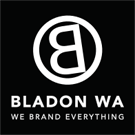
Vector vs. Raster Files: Why We Needs Vector Files at Bladon WA For Promotional Products
When creating promotional products, the quality of your design can make or break your brand’s image. At Bladon WA, we prioritise excellence in every product we produce, so understanding the difference between vector and raster files is crucial. So, let’s dive into the specifics of each file type and answer the question posed in the title: Vector vs. Raster Files: Why We Need Vector Files at Bladon WA for Promotional Products?
Understanding Vector and Raster Files
To understand why we use vector rather than raster files for graphic design, you first need to understand how each file type works:
Raster Files
Comprised of individual pixels, raster files are widely used in the creation, interpretation and reproduction of digital images. They are perfect for very detailed images as each pixel can represent a different colour or shade. Among the most common file formats that use raster images are JPEG, PNG and GIF files. The main disadvantage of raster images is the pixelation that can occur when trying to enlarge them. They are also known as bitmap files, as each file is like a map, containing the coordinates for each pixel in the image.
Vector Files
Rather than storing information about the location of pixels that make up an image, vector files contain references to points on a picture, together with the lines that connect them. These references are in the form of mathematical equations and algorithms. When a vector image is resized, the resulting image is created by adjusting the figures used in the calculations. Because of this, vector images do not pixelate like raster files when enlarged. Vector file formats in common use today include font files, PDF files and Adobe Illustrator (AI) files.
Why Vector Files Are Essential for Promotional Products
at Bladon WA
Our clients rely on us to produce perfect lettering and images on every promotional product we supply. To be able to do this, we must use vector files as they offer a number of key advantages over raster files:Scalability and Quality – The ability to resize images at will is crucial for companies that utilise a diverse range of promotional products in their marketing operations. If you need to print the same logo on a pen, business card or beach ball, it’s imperative to be able to resize the image you use without it distorting or degrading in quality. Crisp, clear images and lettering ensure you always make the right impression with your promotional products from Bladon WA.
-
- Flexibility – Working with vector files makes it much easier to change individual aspects of your images and logos. If, for example, you wish to change the colour of one part of a corporate logo, this can be achieved faster and more easily by editing a vector file than a raster file. It is also easier to adjust the layout of images containing one or more distinct objects when the images are created and saved in vector files.
- Higher Quality Printing – To achieve precision when printing, you must have an image with accurately drawn, clean lines, such as those contained in vector files. This is even more important when printing on media other than quality printing paper. For the best results when applying images and lettering to plastics, fabrics and metals, vector files are essential.
- Efficiency – By using vector files, we’re able to simplify and accelerate the production process for all kinds of promotional products. Client change requests are swiftly implemented and all editing operations are performed quickly and accurately with vector images. If you prize speed and efficiency, vector files are indispensable.
Professionalism – Consistently sharp, detailed images, lettering and logos across your promotional product range will ensure you always present a professional image. If credibility is important to your organisation, vector files are the only practical choice when creating and manipulating images for promotional products.
At Bladon WA, we strive to deliver the highest quality promotional products, to represent your brand in the best possible light. Understanding the difference between vector and raster files, and the key advantages vector files offer, enables us to produce scalable, flexible, precise, and professional designs. If you’re ready to create promotional products that make a lasting impression, contact us today to get started. Let us turn your branding dreams into reality with the perfect vector designs for your needs.




